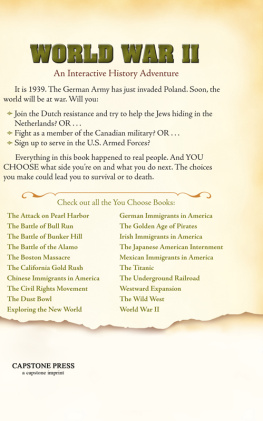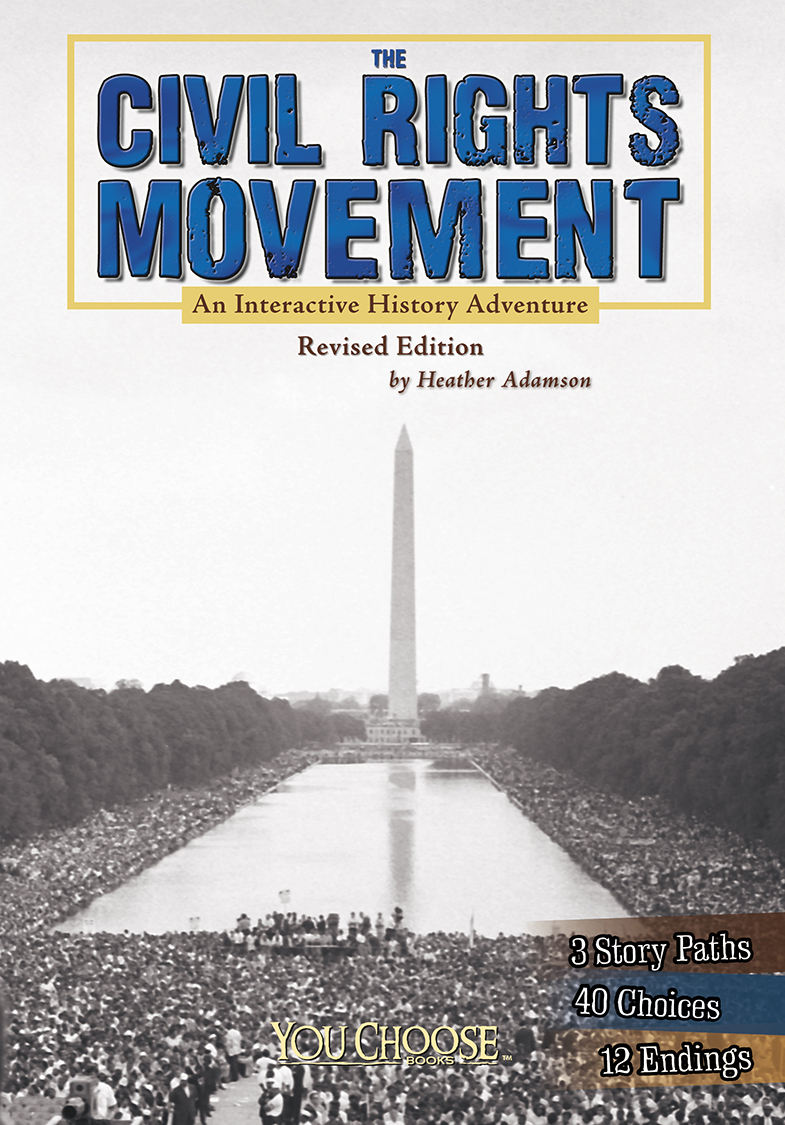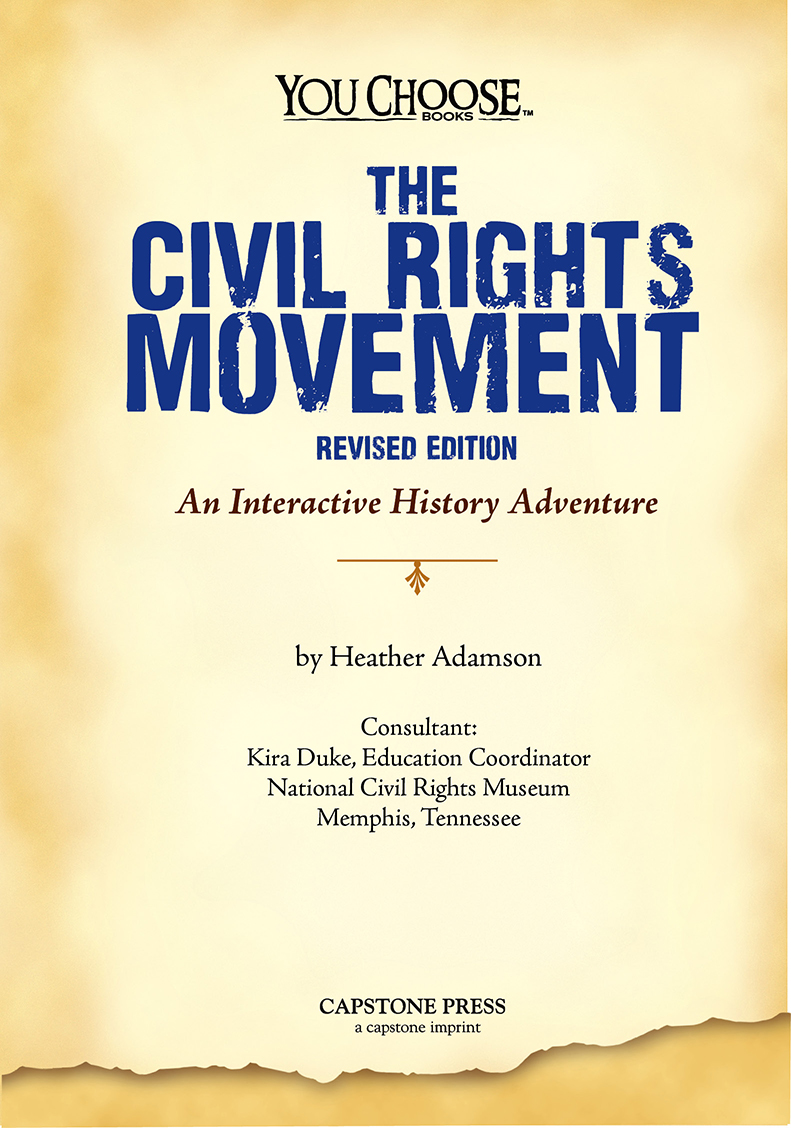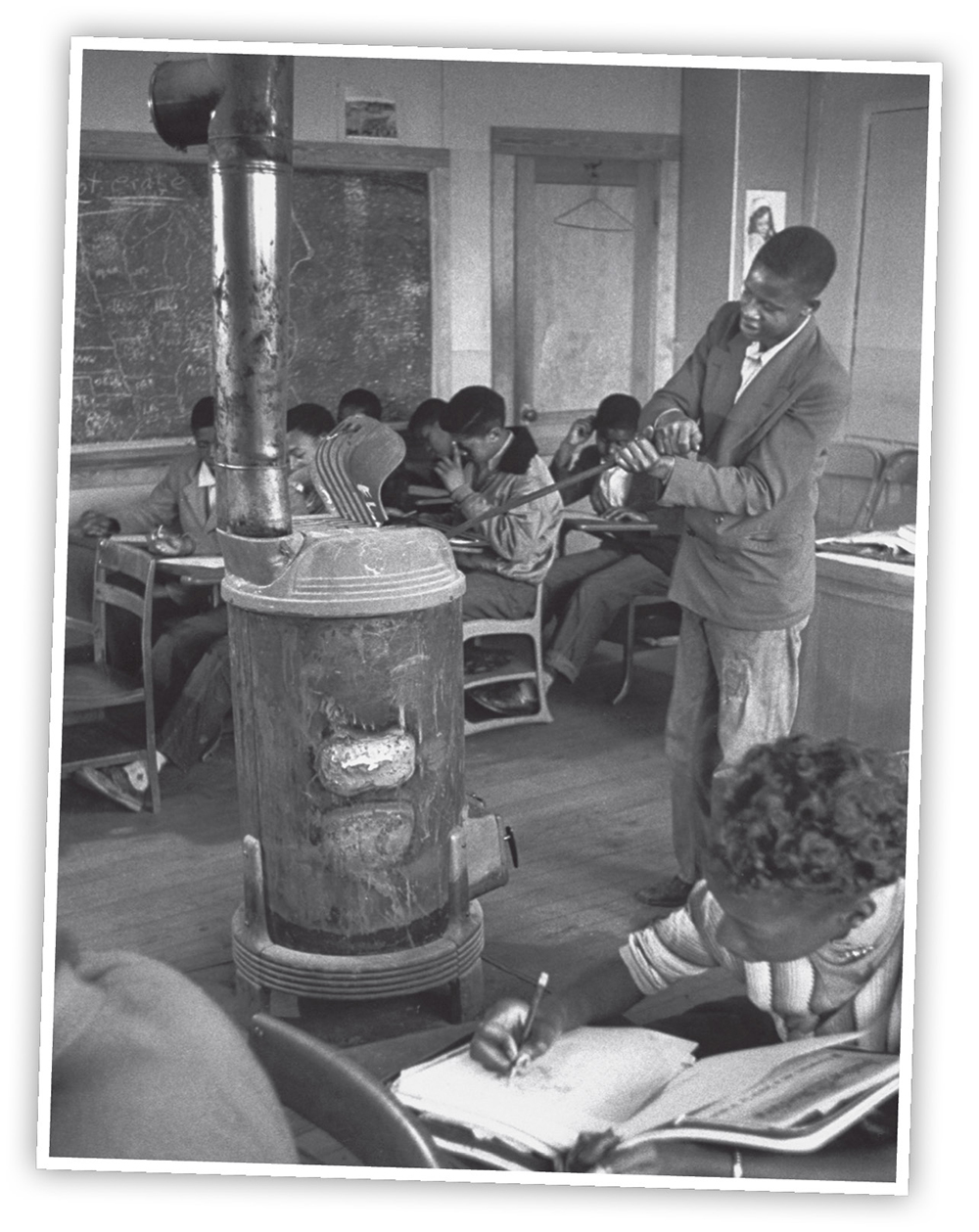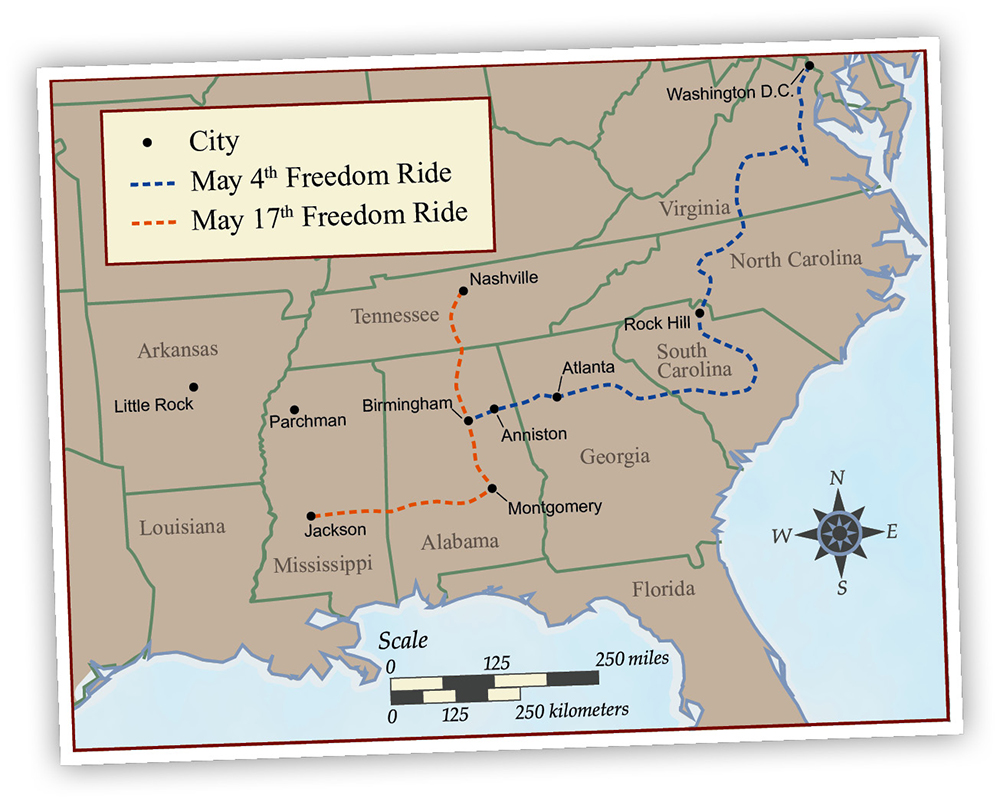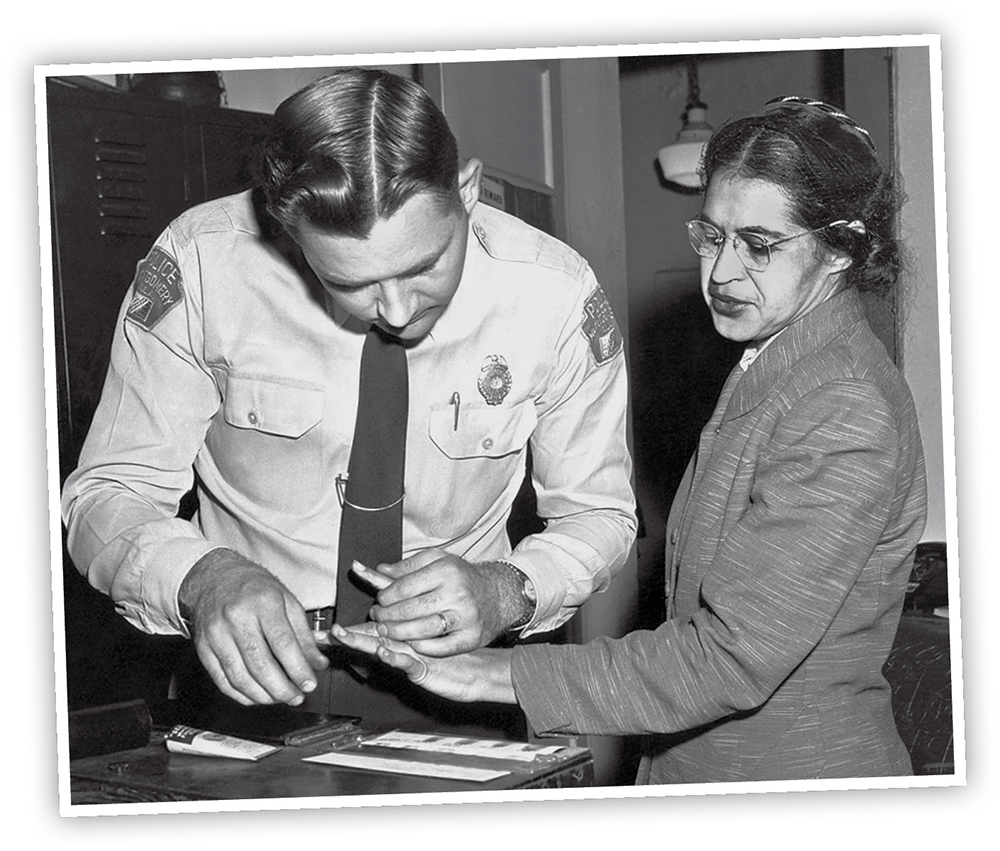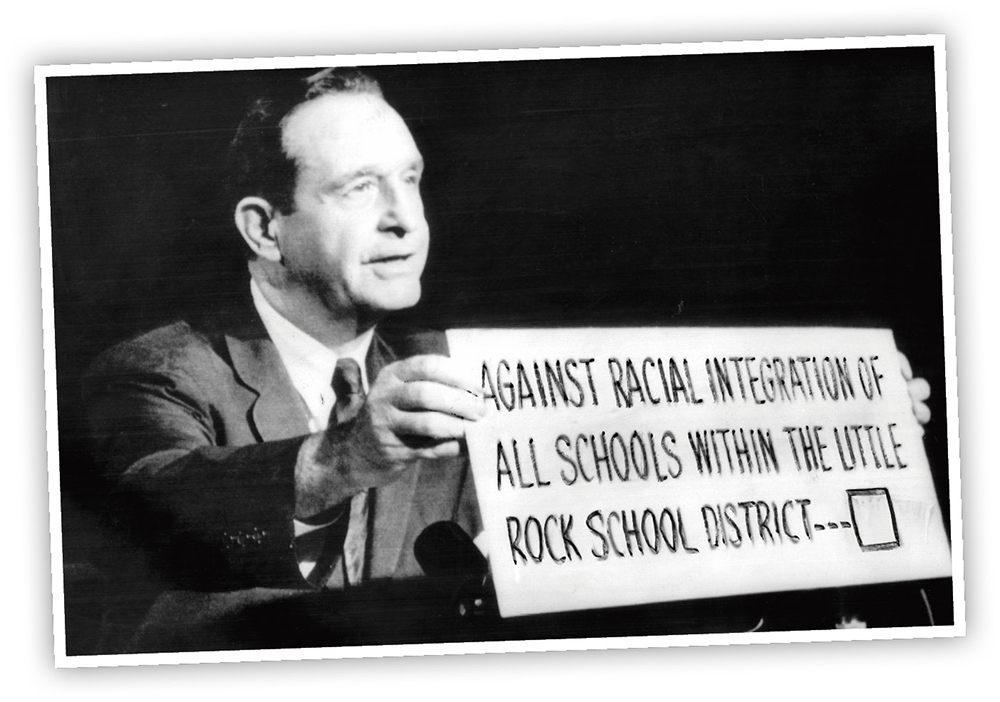For the best You Choose experience,
view in portrait (vertical) orientation.
ABOUT YOUR ADVENTURE
YOU are living in the United States during the time when African Americans arent treated equally. Will you join in the movement to bring civil rights to all Americans?
In this book, youll explore how the choices people made meant the difference between life and death. The events youll experience happened to real people.
Chapter One sets the scene. Then you choose which path to read. Follow the links at the bottom of each page as you read the stories. The decisions you make will change your outcome. After you finish one path, go back and read the others for new perspectives and more adventures. Use your device's back buttons or page navigation to jump back to your last choice.
YOU CHOOSE the path you take through history.
CHAPTER 1
A World Divided
Life in the southern United States is divided. Black and white people attend separate schools. They sit in separate areas in buses, restaurants, and theaters. Even drinking fountains and bathrooms are separated by race. And blacks have the lesser things. Old, broken-down schools. Seats in the back of the bus. Outhouses on the edge of town. Things have been this way for longer than you can remember.
For several hundred years, white people had forced African Americans into slavery. After the Civil War (18611865), life in the United States changed. The 13th Amendment to the Constitution made slavery illegal.
Schools for African Americans were much poorer than the schools for white students.
African Americans, often called Negroes, blacks, or coloreds, were free. White Southerners worried about going from owning black people to being on an equal footing with them. White people were afraid of what would happen to their towns, schools, and churches when people from a different culture joined them.
White Southerners found an answer. They decided to keep whites and blacks separate. The Supreme Court supported the idea. In an 1896 case called Plessy vs. Ferguson, the Court said separate but equal was fair. The South began a life of .
Southern states also passed Jim Crow laws. These laws make it difficult for black citizens to vote, get good jobs, or a good education. The laws also keep blacks from protesting their treatment. Groups like the terrorize and kill African Americans who defend themselves.
But African Americans know they are equal to white citizens. By the 1950s, many are working for change. In 1954, lawyers won a big U.S. Supreme Court case, Brown vs. Board of Education of Topeka. The Court ruled that separate is not equal. Southern schools must accept students of all races.
After the Supreme Court decision, even more blacks demanded civil rights. In Montgomery, Alabama, in 1955, a black woman named Rosa Parks refused to give up her bus seat to a white man. After she was arrested, blacks quit riding Montgomery buses in protest. This bus lasted a little more than a year.
On December 1, 1955, Rosa Parks was arrested for refusing to give up her bus seat to a white man.
The civil rights movement has begun. Both black and white Americans are fighting for equality in schools, jobs, and public places. What role will you play?
CHAPTER 2
The Little Rock Nine
September 2, 1957, is Labor Day in Little Rock, Arkansas. Many people are outside enjoying this last day of summer. Theres a pleasant warm sun, but no one is talking about the weather. Everyone talks about school starting.
Tomorrow, nine black students will try to enroll at Central High School. This school is open to white students only. But three years ago, the Supreme Court ordered schools in the United States to . If black children are equal to white children, they must go to the same schools.
Before 1957, only white students were allowed to attend Central High School in Little Rock.
It is not hard for you to see why black students want to attend Central. It is one of the most beautiful schools in the country. Its students receive an excellent education.
The desegregation has been planned for two years. But now that the day is finally here, people are uneasy. The Mothers League and some local church groups plan to march in the morning against desegregation.
Arkansas Governor Orval Faubus was against desegregating Central High.
The minister from your church called earlier. He asked if you would like to join a small group of people. They will escort the black children to school tomorrow.
You are not sure what you should do. You like your city. You have a good life. Will desegregation make things better? Or will it divide the city and lead to violence?
After supper, you turn on the TV. Governor Orval Faubus is speaking. Faubus is against forced desegregation. He believes it will cause riots. Faubus plans to send the National Guard to Central tomorrow. He says the soldiers will preserve the peace and avoid violence. But youre not sure thats what will happen.
In the morning, you learn desegregation has been delayed until tomorrow. You are glad to avoid making a decision for another day.
At work, your boss tells you he wont have any part of desegregation. You know you will probably lose your job if you escort the black students. After work, you are barely in the door of your house when the phone rings.
Its your minister. He says, Meet at 12th Street and Park Avenue tomorrow morning if you want to join the escort group. A moment later, the phone rings again. A friend asks you to march against desegregation. She says, We cant let the federal government decide whats best for Little Rock.
You decide to protest against desegregation. The city shouldnt have to change its way of life. You go downtown on September 4. Hundreds of whites line the streets. Some carry signs that read We wont and No Negroes.
You stand with the rows of people across from the school. The grounds are surrounded by hundreds of National Guard soldiers with guns. It looks like a war zone. A few people parade down the street with their signs.
Then one black girl arrives at the edge of the property. She is wearing a freshly ironed white blouse and checkered skirt. No one is with her. She clutches her books close as she tries to walk behind the line of soldiers to the school door. But the guard points her to the crowd. Its clear that the soldiers arent there to help her.


